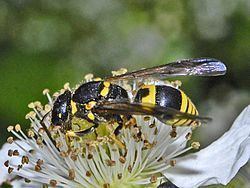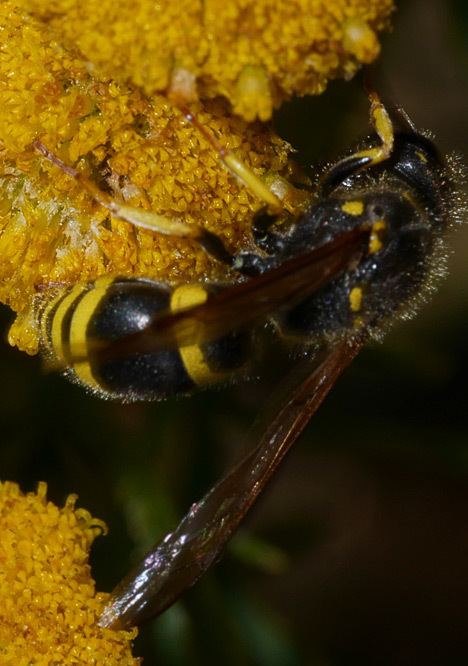Rank Species | Subfamily Eumeninae | |
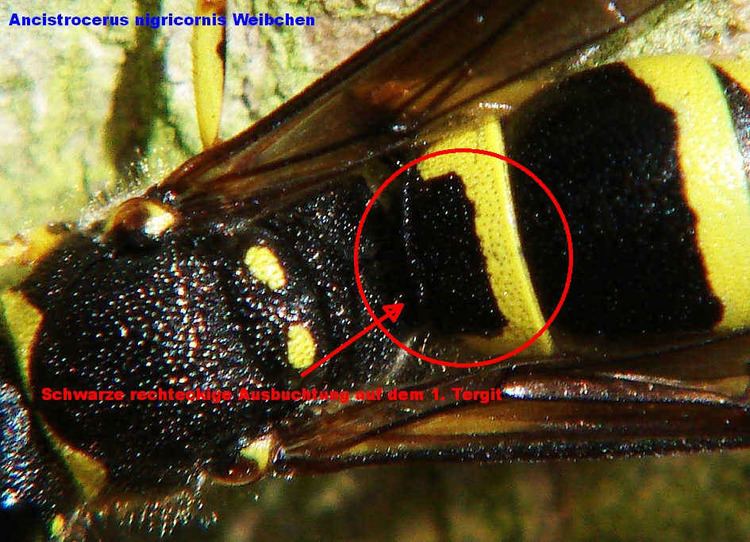 | ||
Similar Ancistrocerus, Ancistrocerus gazella, Ancistrocerus trifasciatus, Ancistrocerus parietum, Great Potter Wasp | ||
Ancistrocerus nigricornis hrn ka
Ancistrocerus nigricornis is a species of potter wasp.
Contents
- Ancistrocerus nigricornis hrn ka
- Ancistrocerus nigricornis beim nestbau
- Distribution
- Habitat
- Description
- Biology
- References
Ancistrocerus nigricornis beim nestbau
Distribution
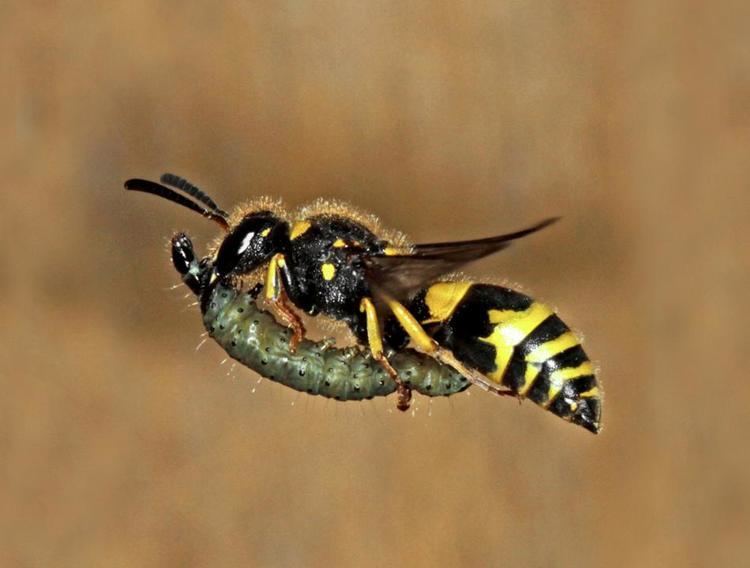
This species is present in most of Europe and in the East Palearctic ecozone, in the Near East, in North Africa and in the Oriental ecozone.
Habitat

These potter wasps live in wet meadows, in open landscapes, sometimes in garden and in areas where are present its feeding and preferred nesting sites.
Description
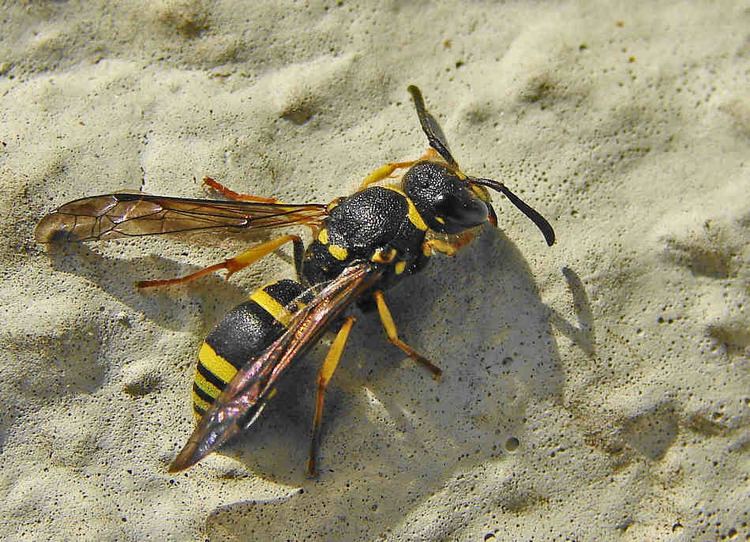
Ancistrocerus nigricornis can reach a length of 6–10 millimetres (0.24–0.39 in) in males, of 9–13 millimetres (0.35–0.51 in) in females. These medium-sized solitary wasps are yellow and black, with brown hairs on thorax, small spots at the base of the front wings and wing stigma.
Metasomal terga III–IV show apical bands. In the females the spot between antennal socket and eye is absent.
Biology

This species has a single annual generation (univoltine). Adults emerge in late summer. Males can be seen from June until September, while females have been recorded from February to October. After mating occurs the males die and the females overwinter and reappear in the spring. As adults, they eat plant juices, honeydew larvae and nectar of various flowers, mainly wild angelica (Angelica sylvestris), hogweed (Heracleum), blackbery (Rubus fruticosus), nightshades (Solanaceae), goldenrod (Solidago) and thistle.
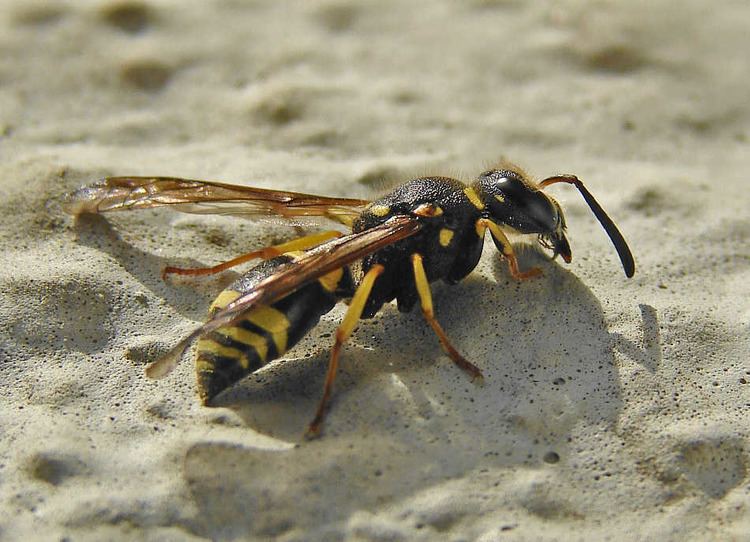
Nest building occurs during the spring and early summer. These nest consists of holes in wood or tubes, commonly in elder and bram blestems, with clay partitions. These potter wasps lay an egg in each cell where they put various paralysed small caterpillars of micromoths, mainly Tortricidae. When the eggs hatch the larvae consume the preys.
